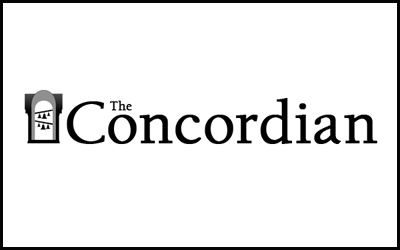Each month in Fargo-Moorhead and around the country, New Americans gather at naturalization ceremonies to be sworn in as new citizens of the United States. The process of becoming a citizen takes a minimum of one year’s time to complete from the time it takes to apply, go through background checks, study, and take the test itself.
Citizens-in-training are given six months to study, as well as a DVD and a booklet listing all of the possible questions that could be on their test. The study materials provide hundreds of different options out of which only 10 questions will be selected. In order to pass, one must
answer six out of 10 questions correctly. Questions come in three different forms: writing, question/answer and dictation. Dication requires for a sentence to be read aloud to test English proficiency.
Not all citizens are required to take this test; being born within the U.S confers immediate citizenship. The questions are mainly topical and aren’t too troubling for an educated American.
But just how prepared for a citizenship test is an American born college student?
There is a way to find out.
The actual test itself is given one-on-one orally by an interviewer, but there is an accessible and useful practice exam online, issued by the United States Citizenship and Immigration services (USCIS).
In a 300 level
English course at Concordia College, students got a glimpse of the difficulty by taking the practice exam on the USCIS website with zero preparation time.
Out of 11 students who participated one aced it, one missed a single question, three passed by one point, and six students failed.
Outside of the English class, two other Concordia students took the online practice exam as well.
Garrett Hendrickson is a junior at Concordia College, born and raised in Virginia, Minn. He described himself as a fairly well informed
citizen, but was a tad worried about how his score would come back.
“I think I’ll do okay,” Hendrickson said. “It would be pretty embarrassing to flunk this though, being an American and all.”
Garrett cruised through the first five questions.
“What president is on the dollar bill,” didn’t stump him, and either did “which ocean is on the east coast of the U.S,” though he did say he frequently mixed up the Pacific with the Atlantic.
Garrett’s cruise control was interrupted by “what two rights does everyone living in the United States have?”
Garrett’s face flushed red.
“I know freedom of speech is one of these,” Hendrickson said. “I cannot for the life of me think of the other right.”
The other right Garrett couldn’t land a finger on is the freedom of religion.
Garrett guessed wrong, and took his first incorrect answer out of six questions. Had this been the actual test, he would only be allowed three more incorrect answers.
Hendrickson finished up with a final tally of 14 correct answers and six incorrect. The test is out of 20, and a 60 percent is needed to pass, so Garrett eked by.
“I was surprised by the kinds of questions,” Hendrickson said. “The questions where I had to name people who had written certain things or held certain offices were very difficult.”
He also described how the practice test doesn’t include the communication aspect of one-on-one interview setting, which is a factor during the actual test.
“Having this be an interview would make me very nervous,” Hendrickson said. “There are people who are smart but don’t communicate well and that could hurt them in a test where you have to speak your answers out loud.”
The second student who took this test is Jenny Hendrickson, of no relation to Garrett. She is a sophomore at Concordia College, whose hometown is Brainerd, Minn. Having taken a civics and government class during high school, Jenny described herself as a well informed citizen and was anticipating doing well on this exam.
Things didn’t go according to plan.
“How many representatives are a part of the U.S House of Representatives?” She let out a nervous chuckle as she read the final line of the question.
She had no idea. Strike one, she did not guess the correct answer of 435 representatives.
Question number two may have been even trickier.
“The Federalist Papers supported the passage of the U.S. Constitution. Name one†of the writers.”
Strike two, James Madison, John Jay, or Alexander Hamilton would have sufficed.
Jenny would not only have two incorrect answers left in her test had this been the real thing. If she failed, there would be a 90 day window in which she could retake the test.
Hendrickson finished with 13 correct answers and seven incorrect, a final grade of 16 percent which just squeaks her by with a passing grade.
“I thought I would do better than what I did,” Hendrickson said. “I don’t think some of the questions were very indicative of being a U.S citizen.”
Jenny described how this test opened her eyes to how much more difficult becoming a citizen is if someone is not born in the U.S.
“I would definitely take a class if I was going to take the real test,” Hendrickson said. “I’d take a government class, and make sure to keep up on current events and watch the nightly news often.”
Both students demonstrated some sense of embarrassment over not knowing a few questions.
Both Garrett and Jenny seemed a little flustered after learning their scores and seeing just how close to failing they both were. Jenny even brought up how she felt some of the questions did not necessarily demonstrate citizen-like knowledge. Considering both were native born citizens, perhaps there’s a sense of pride that comes with being well versed in all things America. This test is an effective way to test that knowledge and see just how well informed someone is.

